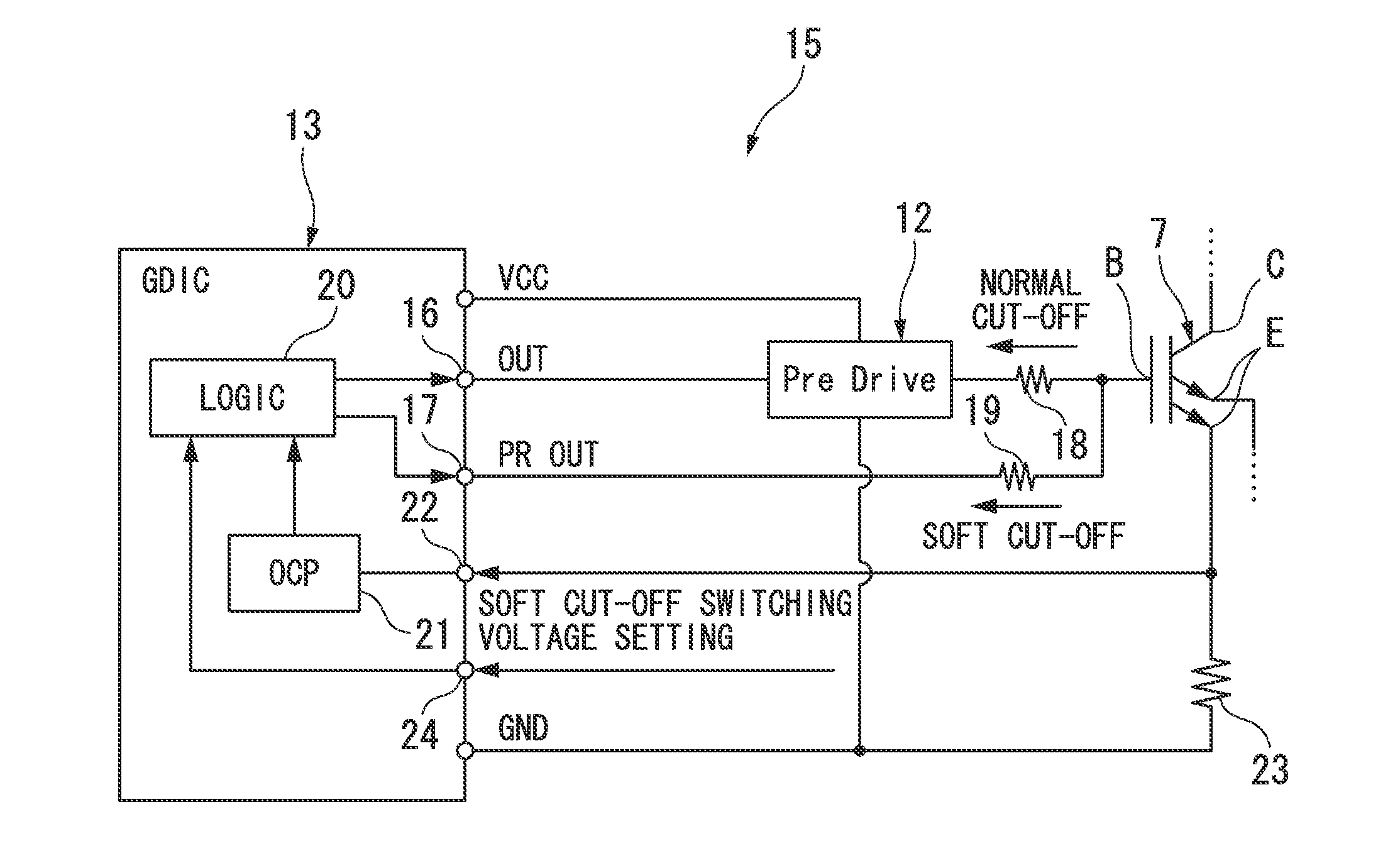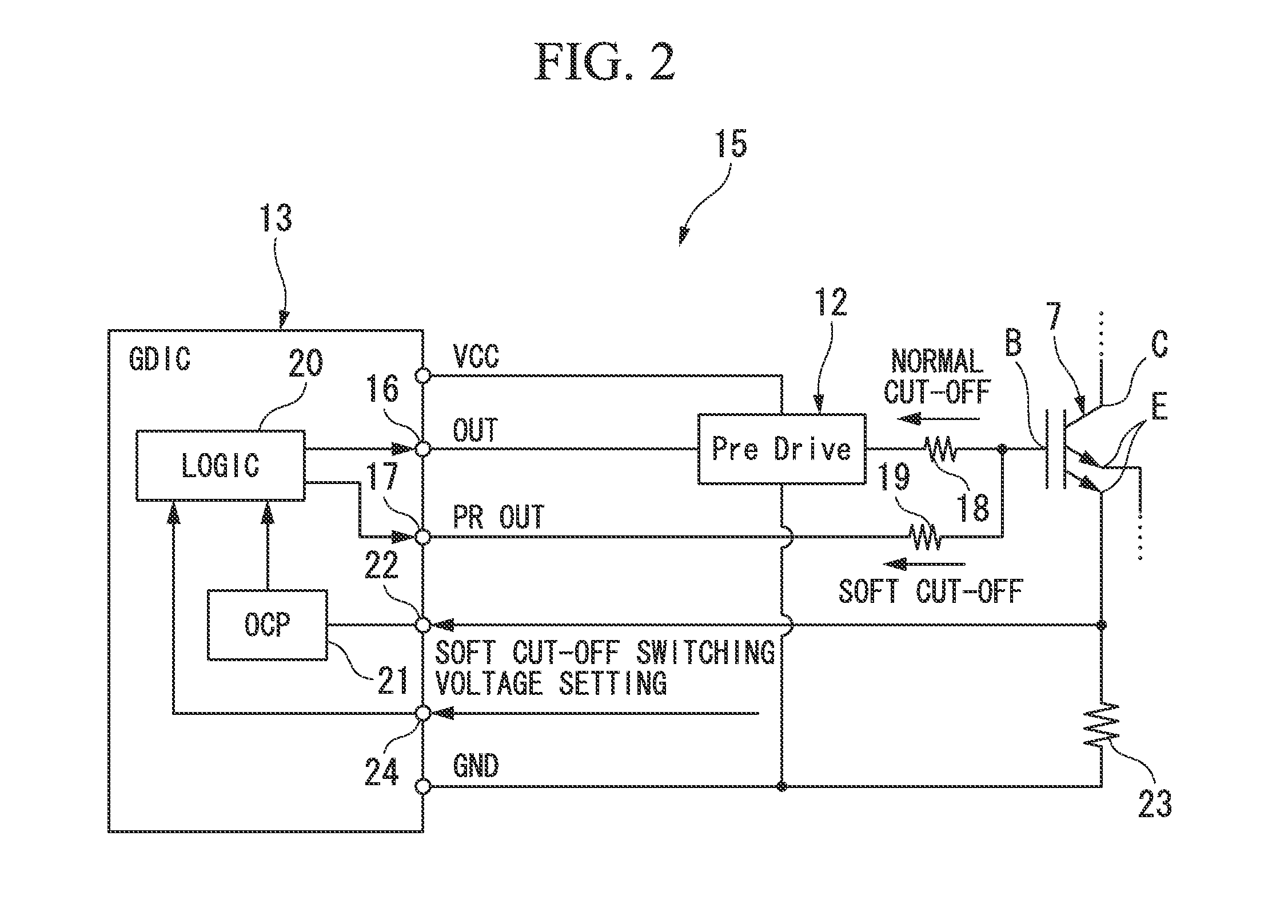Short-circuit protection method
a protection method and short-circuit technology, applied in the direction of relays, electronic switching, pulse techniques, etc., can solve the problems of increased inverter size, increased abnormal voltage (surge voltage), etc., to prevent overvoltage from being applied, reduce withstand voltage, and prevent the effect of overvoltag
- Summary
- Abstract
- Description
- Claims
- Application Information
AI Technical Summary
Benefits of technology
Problems solved by technology
Method used
Image
Examples
first embodiment
[0040]That is, according to the above-described first embodiment, as shown in FIG. 4, when overcurrent (short-circuit) is detected in one of the power switching elements 7 of the upper arm 9 and the lower arm 10, the logic circuit 20 starts the gate cut-off process (cut-off process) of cutting off the gate of the other power switching element of the upper arm 9 and the lower arm 10, and starts the normal gate cut-off using the first gate resistor 18 and compares the collector voltage and the soft cut-off switching voltage to each other. As a result of the comparison, when the collector voltage does not reach the soft cut-off switching voltage, the normal cut-off using the first gate resistor 18 is continued, and when the collector voltage reaches soft cut-off switching voltage, the cut-off is switched to the soft cut-off using the second gate resistor 19.
[0041]Accordingly, in a case where it is detected that a short-circuit fault occurs in one of the power switching elements 7, the ...
second embodiment
[0046]Therefore, when the temperature of the power switching element 7 is detected and this temperature reaches a predetermined threshold temperature, it is determined that the heating of the power switching element 7 is large and the gate resistor is switched from the second gate resistor 19 having a high resistance value to the first gate resistor 18 having a low resistance value. Accordingly, the collector current can drop rapidly and the heating can be suppressed. As a result, as compared to a case where only a single gate resistor having low resistance value is continuously used from start to finish of the gate cut-off process, a time for which only a low resistance value is used can be reduced and thus surge voltage can be suppressed. As a result, the increase in the size of the power switching element 7 or the like can be prevented and the gate G can be rapidly cut off with a simple circuit configuration.
[0047]In the above-described short-circuit protection methods according...
PUM
 Login to View More
Login to View More Abstract
Description
Claims
Application Information
 Login to View More
Login to View More - R&D
- Intellectual Property
- Life Sciences
- Materials
- Tech Scout
- Unparalleled Data Quality
- Higher Quality Content
- 60% Fewer Hallucinations
Browse by: Latest US Patents, China's latest patents, Technical Efficacy Thesaurus, Application Domain, Technology Topic, Popular Technical Reports.
© 2025 PatSnap. All rights reserved.Legal|Privacy policy|Modern Slavery Act Transparency Statement|Sitemap|About US| Contact US: help@patsnap.com



